
While choosing a camera lens, you need to pay special attention to its focal length, which stands for the distance between the convergence point of a lens and a sensor or film capturing a scene. This parameter is measured in millimeters.

A focal length determines how much space a lens can “capture”. The smaller the value is, the wider the angle of view gets. In other words, you will be able to fit a bigger area in your pictures and vice versa.
It is very important to understand the focal length difference because this parameter has a direct impact on the look and quality of a resulting image.
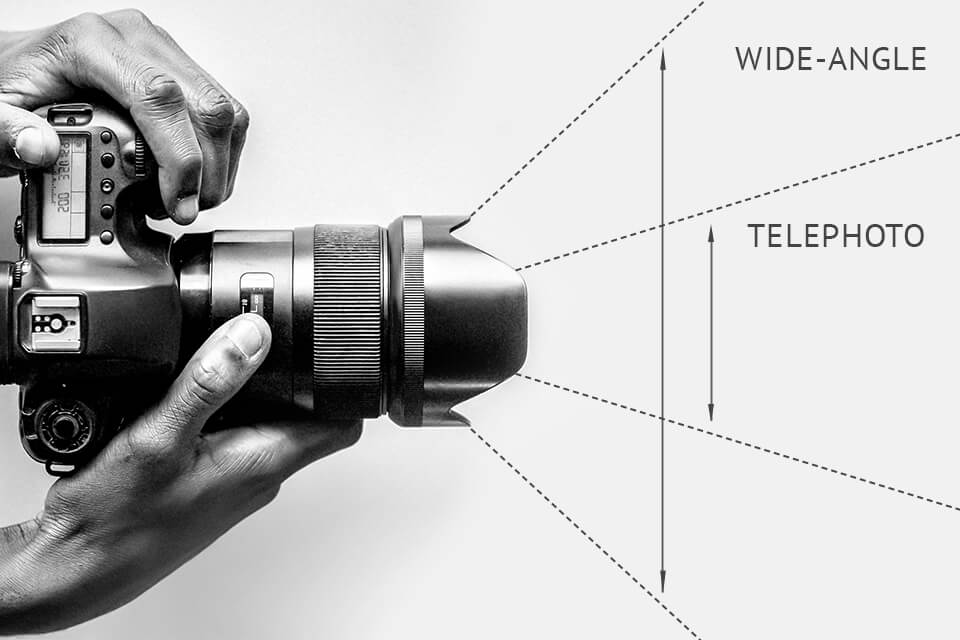
Field of view. First and foremost, a focal length defines how much of the scene you can capture.
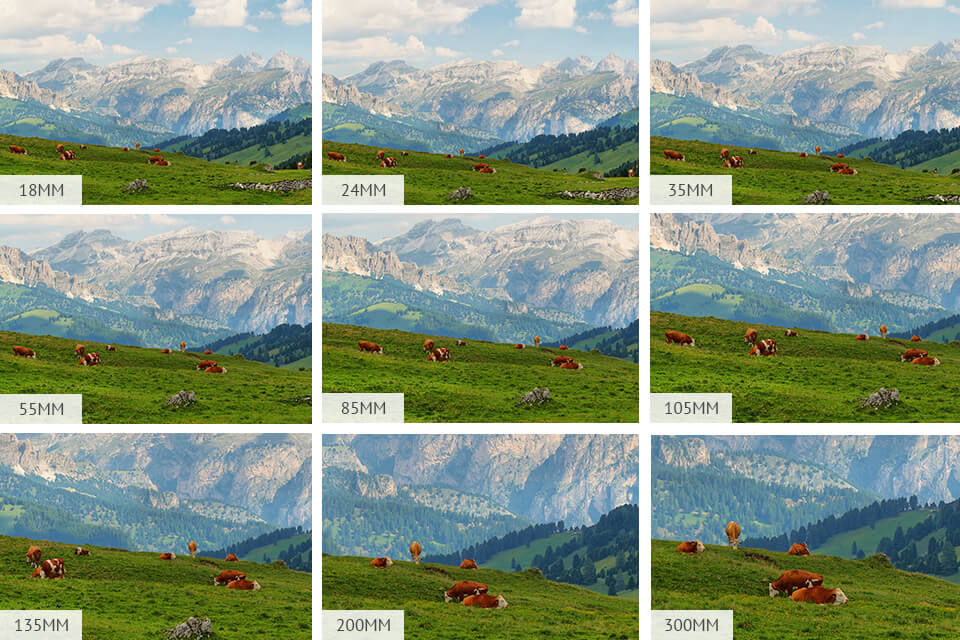
Aperture and depth of field. If you purchase a lens with a long focal length, you will be able to take images of minute objects, even distant ones, due to a shallow depth of field.
In case you want to include many elements in your photo, you need to opt for lenses with short focal lengths because they offer a larger depth of field.
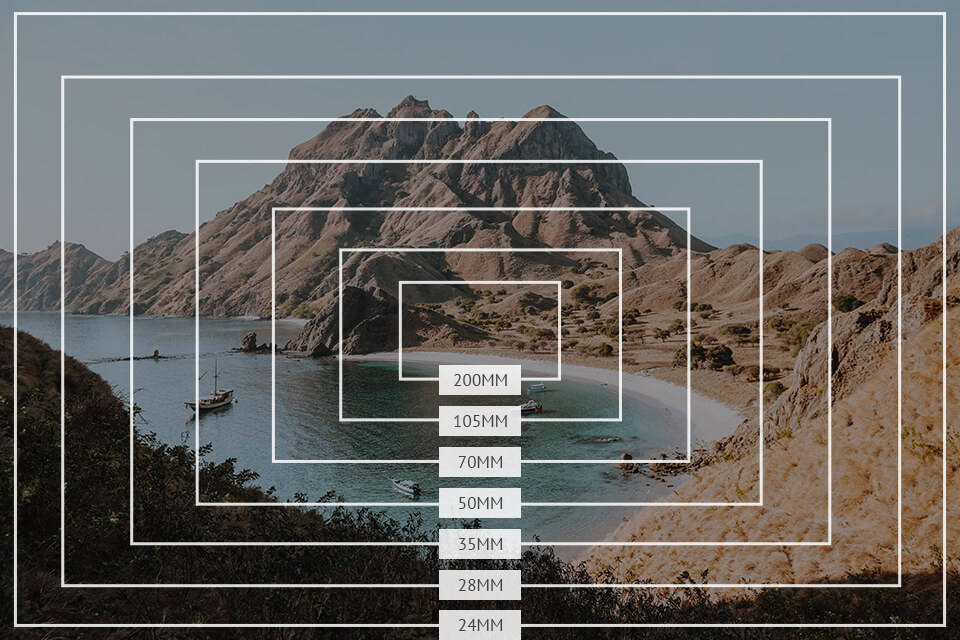
Perspective. The perspective and scale of a photo are also defined by lens focal length. Models with a shorter focal length “broaden” perspective, so there appears more space between objects captured. Telephoto lenses “compress” perspective, so objects in a picture will be located closer to each other.
Image shake. You have probably seen images that have blurry areas and overall low quality. In most cases, such defects chalk up to image shake that arises during shutter release. If you use a lens with a longer focal length and a tight perspective, you will notice that even the slightest movement causes blurriness. Fortunately, you can stabilize your camera by placing it on a flexible tripod.
Focal length comparison looms large if you want to experiment with different genres. Remember that a focal length can greatly affect the look and feel of an image, so you need to choose attentively.
Always think about the photography types you will partake in before purchasing a new lens with a different focal length. In general, there are 4 focal length variations to consider.

Focal length: 10mm, 18mm, 20mm, 24mm, 28mm, 35mm
Best for: landscapes, real estate, large group, panorama and confined spaces
Wide angle lenses are a go-to option if you need a wide field of view for taking a panoramic photo, fitting a spacious area in a shot, and photographing many objects. Such models are regarded by many as the best lenses for real estate photography.
You should also choose wide angle if you want to add depth and dimension to your photo. This is possible due to the capabilities of such lenses to exaggerate distances between foreground and background elements.
Moreover, you can bring the main object closer while keeping surrounding items visible in the frame. Anyway, when you use such lenses, you have to put up with some shortcomings. The biggest issue is that the edges of a picture frequently become distorted.

Focal length: 50mm, 70mm
Best for: portraits, street, and everyday use
If you are looking for universal lenses that you can use for virtually any photo session, standard models will tick the box. These lenses capture a scene almost the same way human eyes do. Besides, they have a precise depth of field adjustments, so you can make quick fine-tuning depending on the aperture.
Standard lenses can meet the needs of both novices and experts. For instance, with 50mm lenses, you can take portrait, landscape, low-light images, and everything in between. Their aperture range is amazingly broad, which is another advantage to keep in mind.
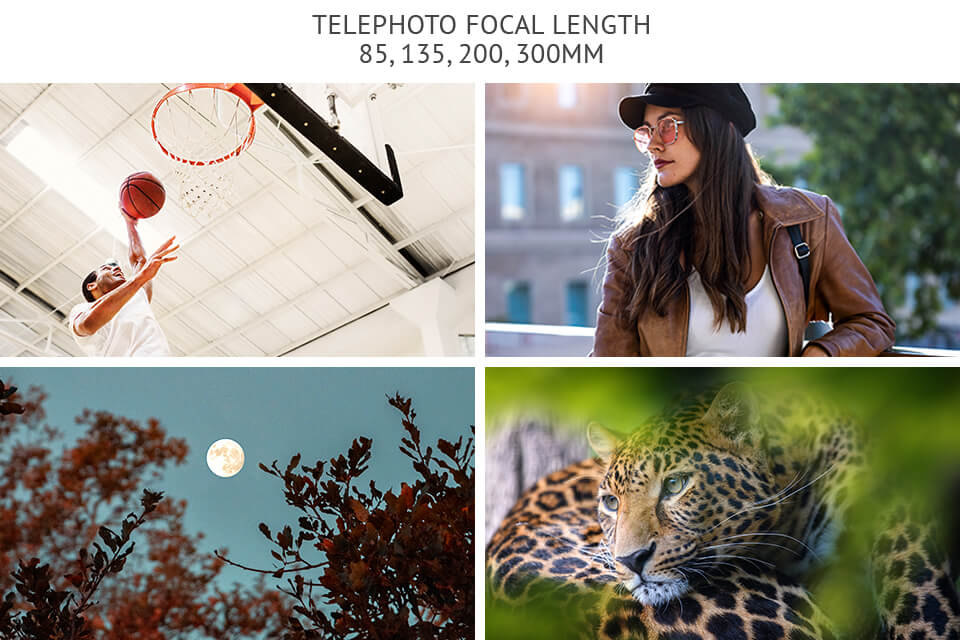
Focal length: 85mm, 135mm, 150mm, 200mm, 300mm
Best for: portraits, sports, wildlife, moon
Simply put, telephoto lenses are an ideal variant if you want to photograph a distant object without sacrificing its details. Photographers who can’t approach a subject because of safety concerns or other reasons, often opt for these lenses.
Preparing this lens focal length comparison, I found out that telephoto lenses will also fit the bill if you want to conduct creative experiments. For instance, you can use such a lens for portraits, if you want to get a more flattering perspective and a shallow depth of field, which is needed for making a foreground object more defined. Of course, if you specialize in capturing remote scenes, you absolutely need to have telephoto lenses in your kit.
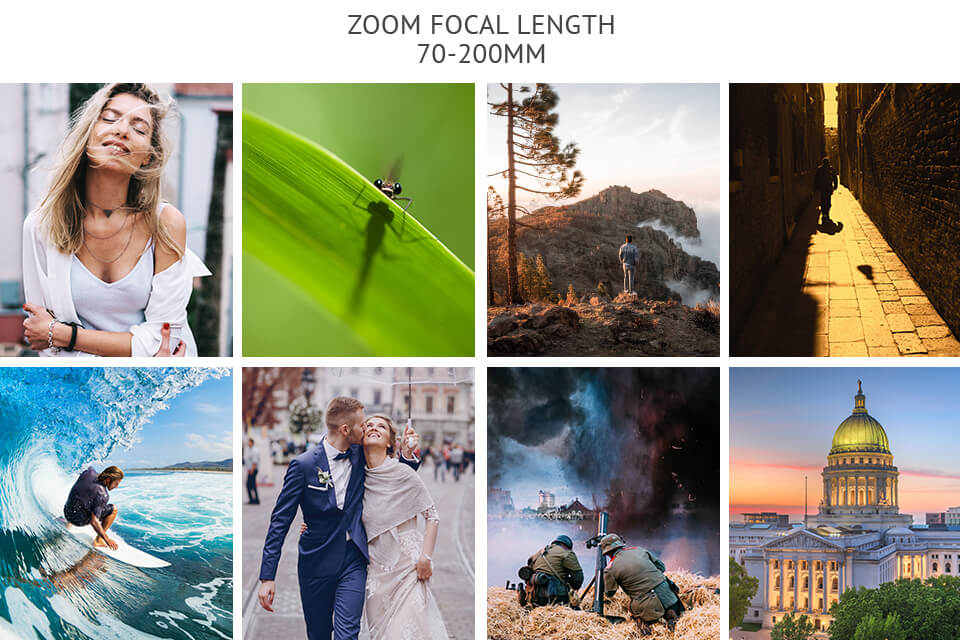
Focal length: 70-200mm lenses, 50-100mm, 28-300mm etc
Best for: portraits, travel, landscape, street, action, wedding, photojournalism, architecture
The highlight of zoom lenses is that they can change focal lengths. Thus, a photographer can take Crisp images of subjects located at different distances without changing lenses but leveraging a single lens.
No wonder, users fete these lenses for their versatility. Nikon and Canon standard zoom lenses will do the job whether you want to take images of landscapes, people, animals, sports events, etc.
So, when there is no need to constantly replace lenses, you can have a more efficient photoshoot.
The crop factor of a camera can alter the focal length of a lens, namely, making it appear longer. For instance, if a camera has a crop factor of 1.5x or 1.6x, it automatically crops a scene captured by a lens, and the field of view becomes smaller.
Thus, 75 mm vs 50 mm lens comparison yields interesting results when the first lens is attached to a full frame camera and the second one to a camera with a 1.5x crop factor. In fact, the field of view will be identical in both cases.
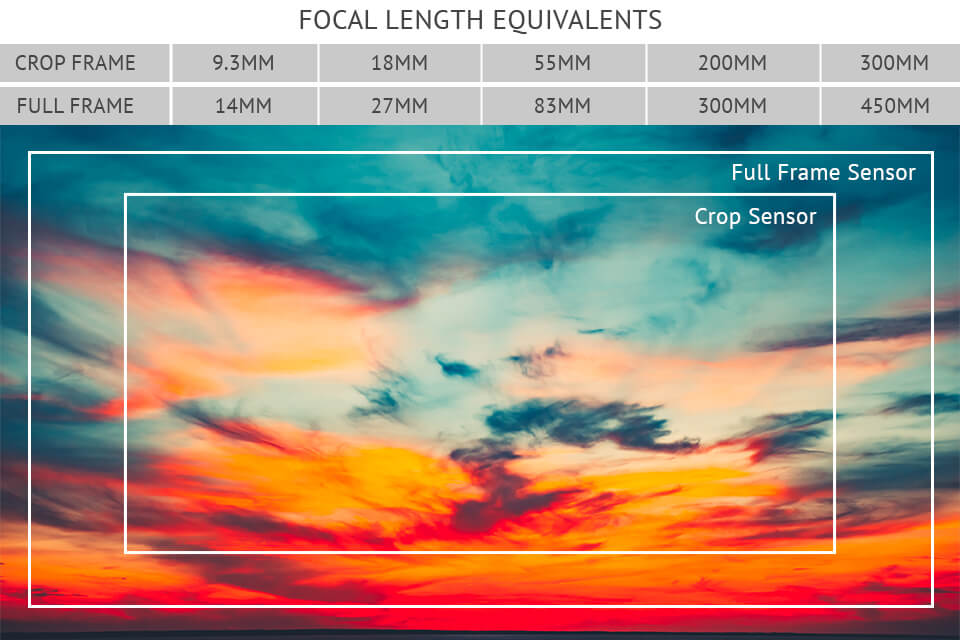
In other words, a photo taken with a crop camera with a smaller sensor will end up looking closer and more magnified than the same scene captured by a full-frame camera. Such lens characteristics can be advantageous if you practice portrait and telephoto photography because you will receive greater magnification and a shallower depth field.
To ensure your images look good without being too zoomed in, you should use a simple equation – multiply the focal length of your lens by the crop factor of your camera sensor. The number you get will denote an effective or equivalent focal length. Knowing it, you can adjust your camera in the most accurate way.
Things are rather simple – the longer focal length (lower optical power) leads to higher magnification and a narrower angle of view, and vice versa.
Typically, most lenses cause minimal distortion. However, when the focal length raises to extreme values, there also appears severe distortion. Fisheye camera lenses are wide and they inevitably give a barrel distortion, so your photo will look almost circular. In general, the longer the focal length is, the more noticeable the distortion becomes.
35mm lenses are great for indoor photo sessions due to their wide field of view. 50mm lenses are more zoomed-in, so you can hardly use them for studio shooting but can fully rely on such lenses for outdoor scenarios.
Opt for 85 mm and 135 mm lenses for portrait photography. Moreover, with such lenses, you will get beautiful images without distortion.
Yes, the longer the focal length is, the shallower the depth of field becomes. So, all surrounding elements near your main object will become blurred.